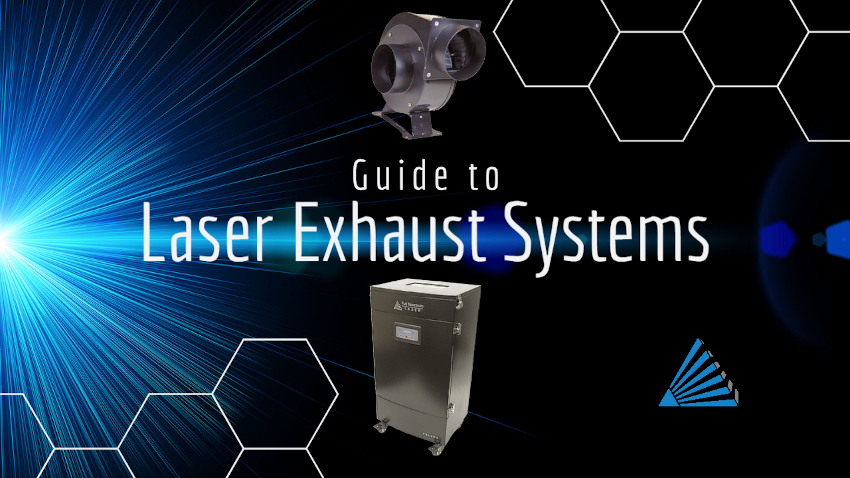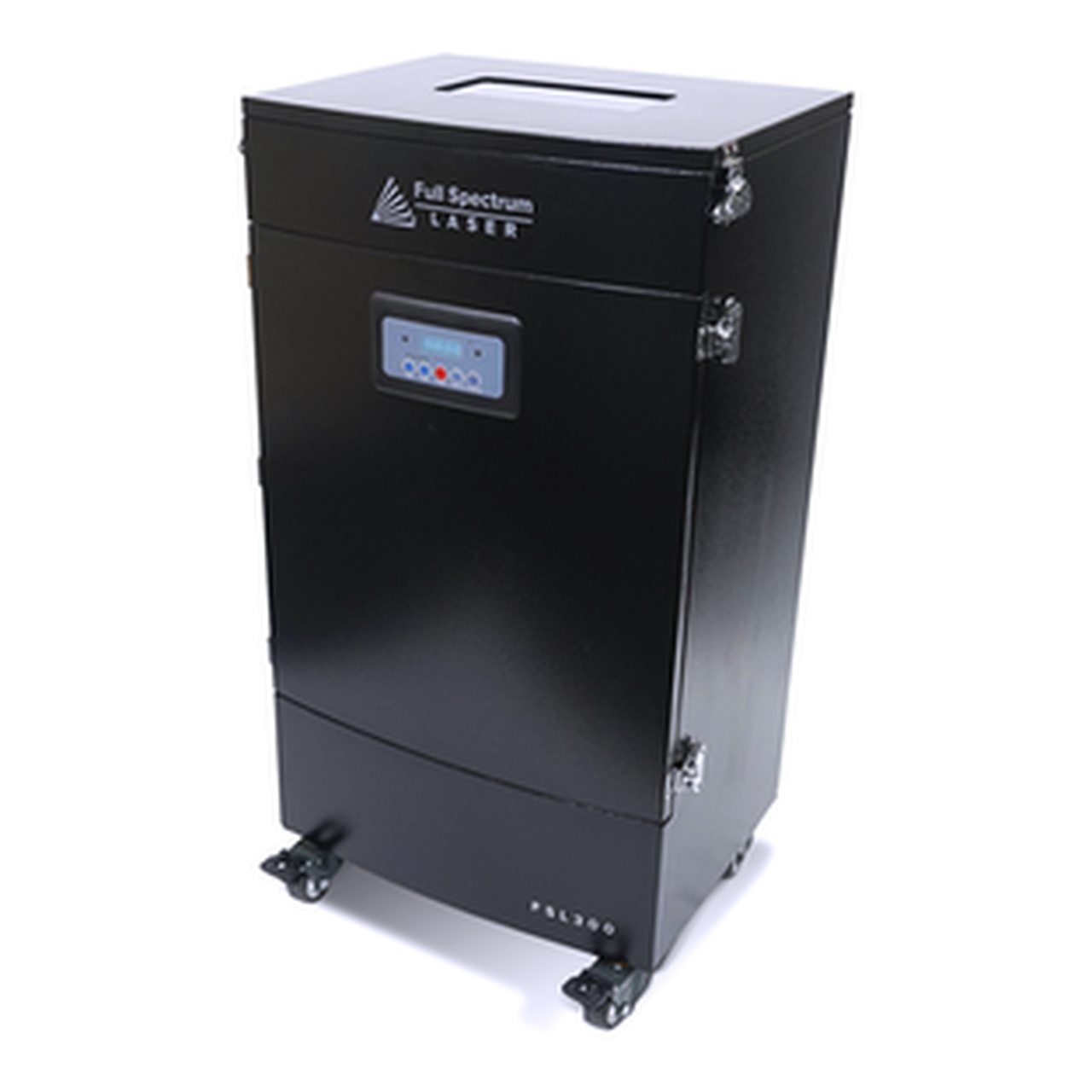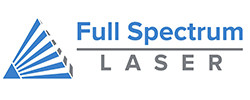
Laser cutter and engraver machines produce fumes and particles from the materials they cut. To make sure these fumes are properly removed from the spaces people occupy in and around the machine, a laser cutter and engraver exhaust system is used. This works much like a typical clothes dryer exhaust system. Big production shops might have vastly larger and complicated laser exhaust systems, but the overall concept is the same whether for a big business or home use. As a result the following information is useful whether you are using a home laser cutter machine or a larger industrial laser cutter.
What Laser Cutter and Engraver Exhaust Fans Do
.png)
Laser cutter and engraver exhaust fans have a simple, but important job, to remove fumes and fine particle from spaces where people breath and route them safely away. This is generally done with a fan that sucks the fumes from the laser cutter and engraver bed and then pushes them through ducting to a port that leads outside the building. Dedicated manufacturing spaces often have these ducts as permanent fixtures with multiple exhaust ports, however the set-up for smaller spaces can be as simple as positioning the ducting to vent out of an open window.
Why Exhaust Fans Are Important
It is unsafe to leave your exhaust unventilated in your work area. Concentrations of fumes from your laser cutter and engraver machine can irritate the throat, lungs, and worse. Remember, exhaust fans are not designed to prevent toxic fume exposure like Chlorine or Cyanide. Certain materials such as PVC should never be cut with a laser, no matter how good the exhaust system is. Some exhaust fumes, like Chlorine gas generated from cutting PVC, can even deteriorate and degrade the laser machine itself. The occupational safety and health administration (OSHA) requires manufacturers of materials to communicate possible hazards using labeling and safety data sheets. Always check with materials manufacturer guidelines before cutting certain materials that can be toxic. That said, even non-toxic fume can accumulate, creating breathing and even fire hazards.
Proper Set-Up & Usage
Individual needs for laser cutter exhaust fan size as well as power will vary between desktop laser cutters, and industrial laser cutters. In general, be sure you have a powerful enough exhaust fan to successfully push air through the ducting to reach the outside exhaust port. The further away the exhaust port is from the exhaust fan, the more power it will need to get the job done. It is also important that your exhaust fan is configured to pull air and fumes out of the laser bed and not blow air into it. Finally, It is important that either rigid or flexible metal ducting be used in the exhaust system. Any type of “soft” ducting is potentially flammable and should not be used under any circumstance.
Exhaust Fan Maintenance
Exhaust fans pull dust and small particles, as well as fumes and smoke, from the workspace inside the laser. Over time, these minute particles will accumulate in the ducting, on the blades and interior of the exhaust fan, just like a normal room fan used for cool breezes in a home. Depending on usage, the ducting and the fan should be inspected weekly to monthly and thoroughly cleaned. If these particles are left to accumulate too long, they can become a fire hazard. Check your machine's user manual for complete maintenance procedures for your laser cutter.
Laser Cutter and Engraver Fume Extractors

Fume extractors like the FSL100 do the same thing as an outside exhaust port, however, instead of releasing the fumes outdoors, they pull the fumes through a complex filter system that catches the particles and purifies the fumes to safe levels of contact. It works remarkably well because of the different types of filters. Different fume extractors may have different configurations of these filter types, but they all work the same way.
HEPA Filters
HEPA stands for High-Efficiency Particle Arresting and that is exactly what HEPA filters do. They typically use a polypropylene mesh (fiberglass) to capture very small particles. While HEPA filters are designed to capture very small particles, they do not filter out gases or odors. Regulated by the US Department of Energy, HEPA filters remove up to 99.97% of airborne particles. This is crucial for allergy and asthma sufferers. Like the other filters, they are consumable items and will eventually need to be replaced, depending on usage.
Carbon Filters
The main element of a filter system are activated carbon filters. These are usually a series of carbon filters whose purpose is to remove small particles and material fumes such as the gas produced when cutting acrylic. These work much like carbon-based water purifiers. It is through the carbon filters that foul odors and fumes are eliminated. These too can be periodically cleaned for extended use, however, once the laser operator starts to notice odors in the air again, it is time to replace the filters.
With all these filters combined, fume extractors are incredibly efficient when properly maintained. Once odors or irritations are noted, even after cleaning, the filters will need to be replaced. There will be some odors that will not be removed from the fumes, but the harmful components will no longer be present. This is mostly the case with plastics such as acrylic.
Regardless of what you do with a laser, the engraving and cutting process will produce some sort of exhaust. It is in you and your laser machine’s best interest to make sure that the exhaust is taken care of properly. Just make sure you take the proper safety precautions and perform the necessary maintenance required for your exhaust setup.
Do you still have questions? Our technicians and representatives here at Full Spectrum Laser are ready to help you out, so feel free to contact us at any time.
Full Spectrum Laser is a leader in laser cutting and laser engraving systems. Our systems range in size from desktop units and high-volume machines through industrial-grade production equipment. Our machines are running all over the world: from grade schools to National Labs, garage startups and many Fortune 500 companies. Contact us today to learn more.

